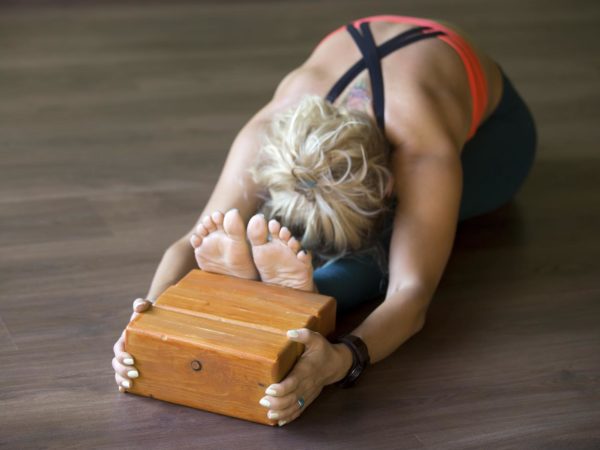Yoga Props: Helpful or Harmful?

Traditional yoga was an ascetic practice, often done on stone temple floors or the bare earth. While traditional yoga practitioners didn’t have the props that practitioners have today, these cushions and other aides can be invaluable tools for making yoga more accessible and can provide an enhanced experience.
So, do you need props? Most yoga poses can be performed without them, but if you find certain poses painful or otherwise challenging, by all means, experiment! Whatever you feel most comfortable with in your yoga practice is fine.
Here are some props commonly used in yoga practice:
- Yoga Mat: The most common prop used in modern yoga, the yoga mat – also known as a sticky mat – is important for virtually all but the most minimalist of yoga practitioners. It provides traction, stability, and support. Yoga mats come in a variety of shapes, sizes, and thicknesses to provide personalized support and cushioning between you and the floor. A yoga mat also provides traction and allows you to use bare feet when the floor is slippery.
- Yoga Block: Another common prop, small foam blocks provide support and help you extend more fully into certain poses. Yoga blocks come in various sizes and can dramatically improve balance when you are otherwise unable to reach the floor.
- Yoga Strap: Yoga straps are much like stretching straps. These are ideal if you have limited flexibility as they allow for greater range of motion as well as stabilization of joints.
- Blanket: Blankets can help with support and cushioning by rolling one up and placing it under your knees or back during certain poses. A blanket can also be used for warmth during resting poses, such as the Corpse Pose.
- Ball: A yoga ball, sometimes called a fitness ball, exercise ball, or stability ball, is a soft, inflated ball used during certain yoga poses to provide a deeper stretch and engage muscles that are otherwise difficult to reach. Using a yoga ball also encourages the body to respond to instability; this can help in developing better balance.
- Towel: If you are practicing certain yoga styles such as Bikram or Hot Yoga, you will invariably perspire. Using a towel during yoga can help wipe away the perspiration, keeping your vision clear and decreasing your chance of slipping on the floor. A rolled-up towel can also be used for head support when lying on the floor.
- Chair: A chair can help with support and balance for certain poses. There is even an entire yoga style – Chair Yoga – built around use of the chair in poses.
- Wall: Walls provide a solid structure for balance and support during certain yoga poses such as Legs Up the Wall Pose. Using a wall for support can help you hold a certain yoga pose for a longer period of time and eventually allow you to balance without the use of a wall.
- Sandbag: Yoga sandbags come in a variety of weights, typically around 10 pounds, and include a handle on one end. Using a sandbag for its added weight can help you achieve a deeper stretch. You can place a yoga sandbag on your lower back during Child’s Pose or on top of your feet in Legs Up the Wall to stabilize your legs.
- Eye Bag: Also called eye pillows, eye bags are small sandbags that are placed over your eyes during lying poses such as Corpse Pose. They help deepen the feeling of relaxation by keeping your eyes closed effortlessly.
Other things to consider:
- If you incorporate yoga props into your routine, be clear about your purpose. If you use a prop only because a teacher requires it, you will not deepen your practice. Understand why you are using a prop and make it a point to ask why it is required if you do not understand.
- Experiment with props in multiple ways if you cannot fully achieve the desired result in a pose. If a pose requires stretching a certain distance or feeling a certain way, use a prop to achieve those results, but within reason.
- If you do not feel comfortable in a certain pose and feel you may lose balance, see which prop you can use to help stabilize your body. If a prop does not help, you may have to modify the yoga pose, seek further instruction or avoid it altogether.
- Do not become dependent on yoga props. They are there to help, but should not be used to make your practice effortless. Use the props as a way to help you progress with the goal of eventually minimizing or eliminating their use.
As with any exercise program, please consult your physician before starting if you have questions or concerns about medical conditions, past injuries, issues with pain, balance or flexibility.
Reviewed by: James Nicolai, M.D., on August 20th, 2013.









